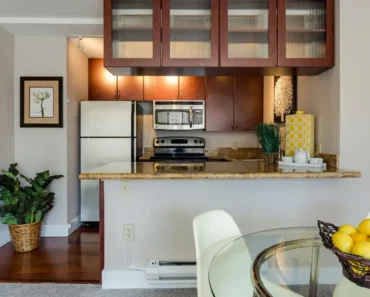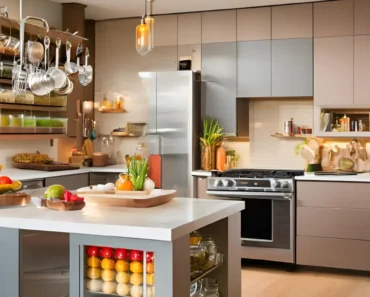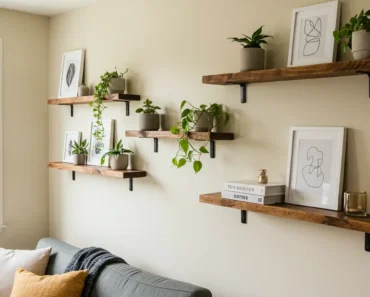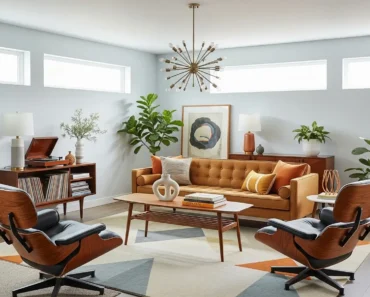Use these Home Coffee Bar ideas to shape a calm, functional coffee corner that fits your space, budget, and taste.
A Home Coffee Bar does more than hold a machine and a few mugs; it shapes how you start the day and how you slow down at night.
Coffee habits keep shifting toward home, as more people brew their favorite drinks in kitchens, studios, and small offices instead of standing in line.
That shift turns the Home Coffee Bar into more than a quick decor trend, because a small, well planned station can save money, cut stress, and raise the quality of every cup.
This guide walks through planning basics, fourteen flexible layout ideas, style tips, and step-by-step moves that help you build a Home Coffee Bar that fits real life in the United States, Canada, the UK, Australia, South Africa, and beyond.
Why a Home Coffee Bar Makes Sense Right Now
Coffee sits at the center of many daily routines, and more people now treat brewing as a small ritual instead of a rushed stop on the way to work.
Rising café prices and flexible work schedules push more brewing back home, which makes a dedicated Home Coffee Bar a smart long term move.
A good station turns scattered tools into a compact setup where everything has a place and every step feels smooth.
It also supports guests, remote work, and family rhythms, since anyone can walk up, see what to use, and pour a drink without help.
When you plan the bar around your real habits, you gain a calm anchor in your home instead of a cluttered corner that you want to ignore.
Plan Your Home Coffee Bar Before You Buy a Single Thing
Strong Home Coffee Bar design starts with a short planning step, not with a cart or a shelf you grab on impulse.
A clear plan keeps you from random buys and helps your layout match your real coffee habits instead of a staged photo.
Step 1: Understand Your Coffee Routine
First, watch your coffee routine for a few days and note how many cups you drink, what you brew, and where you stand when you pour.
If you make one pour over in the morning and one decaf in the evening, you need a different setup than a family that drains a drip carafe before noon.
Write a short list of your main brew method, your backup, and any special drinks you enjoy, such as cold brew, flat whites, or flavored lattes.
Step 2: Pick the Right Spot
Next, walk your kitchen or living space and look for a spot that sits on your natural morning path between bed, bathroom, and front door.
Many people place a Home Coffee Bar at the end of a counter run, on a short wall near the fridge, or on a console in the dining room.
You can also use a corner of a pantry or an alcove beside a tall cabinet as long as you can reach an outlet without trailing cords.
The right spot keeps beans away from heat and sun, leaves space for doors and drawers to open, and keeps walkways clear for others in the home.
Step 3: Define Your Budget and Priorities
After you pick a zone, set a real budget so your Home Coffee Bar feels smart and planned instead of rushed and costly.
Split your budget into three buckets: gear, storage, and decor, and give the largest share to tools that touch your coffee.
A quality grinder or brewer changes every cup in a way that a new sign or extra mug set never will.
Keep a short wish list for later upgrades so you add new pieces over time instead of stacking everything into one expensive weekend.
14 Home Coffee Bar Ideas for Every Type of Space
With a plan in hand, you can choose a Home Coffee Bar layout that fits your room, your taste, and your gear.
The fourteen ideas below cover tiny studios, family kitchens, offices, and outdoor corners, and you can mix details from several to build your own version.
1. Built-In Kitchen Nook Home Coffee Bar

If your kitchen has a small alcove or a gap between tall units, you can turn that niche into a permanent Home Coffee Bar.
Install a short counter or stone top, then add shelves or upper cabinets above for mugs, jars, and less-used tools.
A tile, wood panel, or painted accent on the back wall frames the station and makes it feel like part of the kitchen design instead of an afterthought.
Place the machine and grinder on one side, keep a clear patch for prep, and store filters, spoons, and napkins in the drawers under the main work zone.
This option works well if you own your home or plan a remodel and want the coffee area to match your main kitchen finishes.
2. Floating Shelf Coffee Wall for Renters
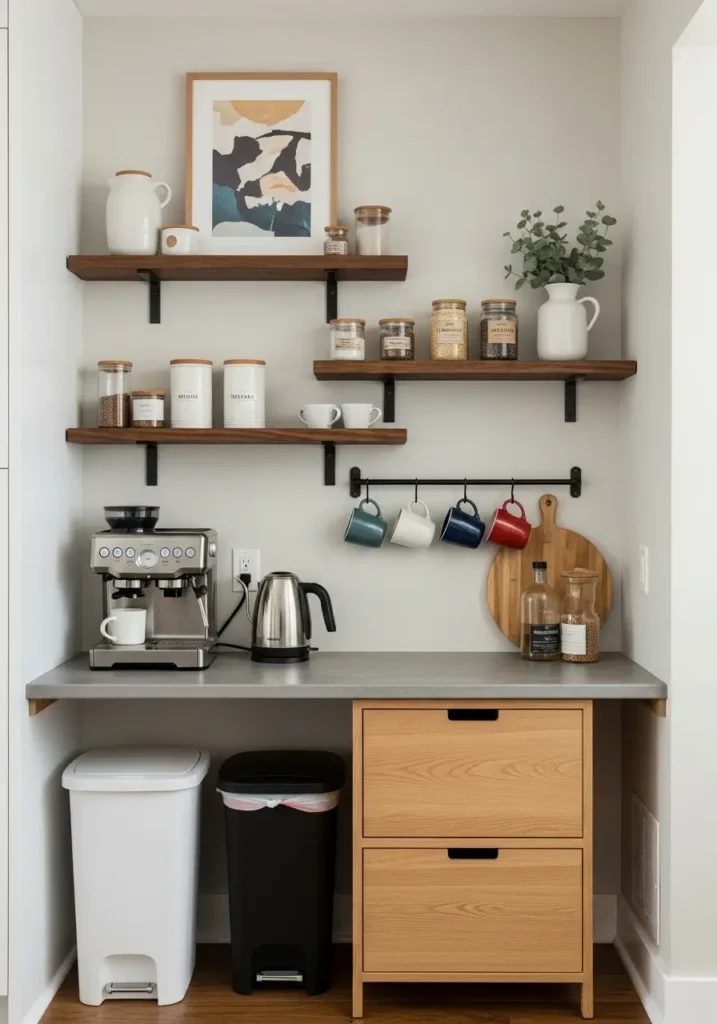
When you rent or have limited floor space, a floating shelf wall offers a smart way to build a Home Coffee Bar without bulky furniture.
Mount one deep shelf at counter height for the machine and kettle, then add two or three shallower shelves above for mugs, jars, and small decor.
A simple mix of mugs on hooks, closed canisters, and one art piece on the top shelf keeps the wall balanced and light.
You can place this setup over a narrow cabinet or drawer unit so you gain hidden storage, trash, or recycling under the station.
When you move, you remove the shelves, patch the holes, and take your entire Home Coffee Bar to the next place.
3. Hidden Pantry or Cabinet Coffee Station
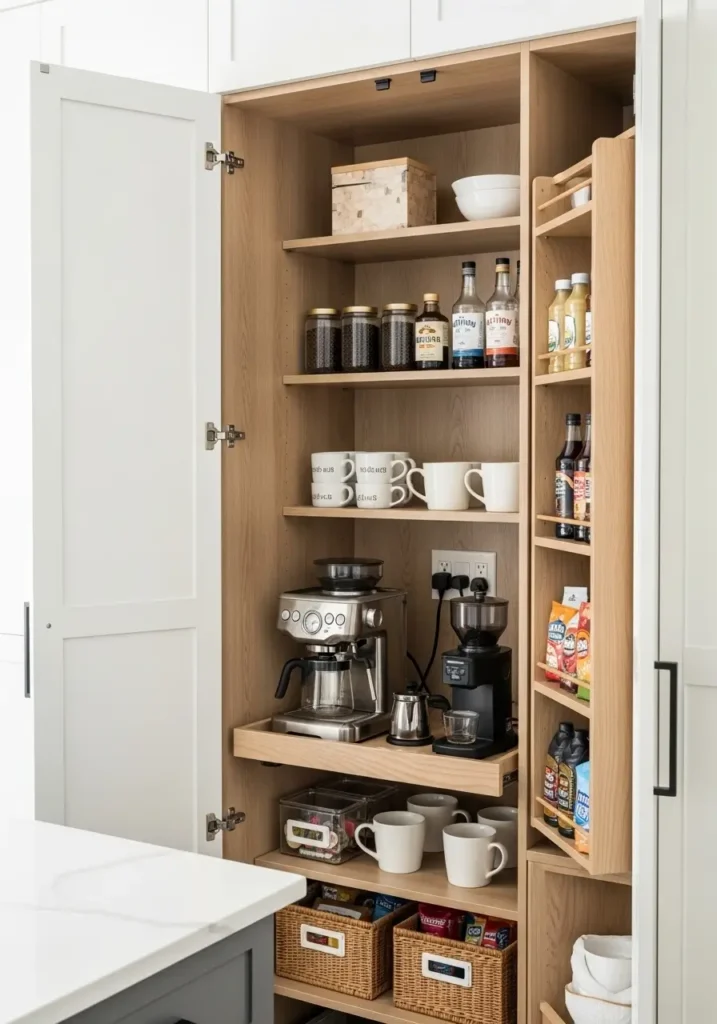
If you prefer clear counters and want your Home Coffee Bar to disappear after use, a hidden pantry station suits that need.
Convert part of a walk-in pantry, a tall cabinet, or even a spare wardrobe into a coffee nook with shelves, outlets, and a pull-out tray.
Place the brewer and grinder on the tray, keep mugs on side shelves, and store beans, syrups, and snacks in labeled bins at eye level.
When you close the doors, the kitchen looks calm and open, yet you still enjoy a full Home Coffee Bar just a few steps away.
This design works well for open-plan homes and for people who host often and want a clean, simple backdrop.
4. Rolling Cart Home Coffee Bar

A bar cart or kitchen cart can act as a flexible Home Coffee Bar that rolls between rooms and adapts to many layouts.
Place the main brewer and kettle on the top shelf, store beans and filters on the middle shelf, and use the bottom shelf for cups and trays.
Choose a cart with strong wheels, raised edges, and a wood or metal top so everything stays stable when you move it.
During gatherings you can roll the cart near the dining table or patio so guests pour drinks without crowding the kitchen.
On quiet days you park it in a corner and free up floor space in small homes or studio flats.
5. Slim Console Coffee Bar for Tight Walls
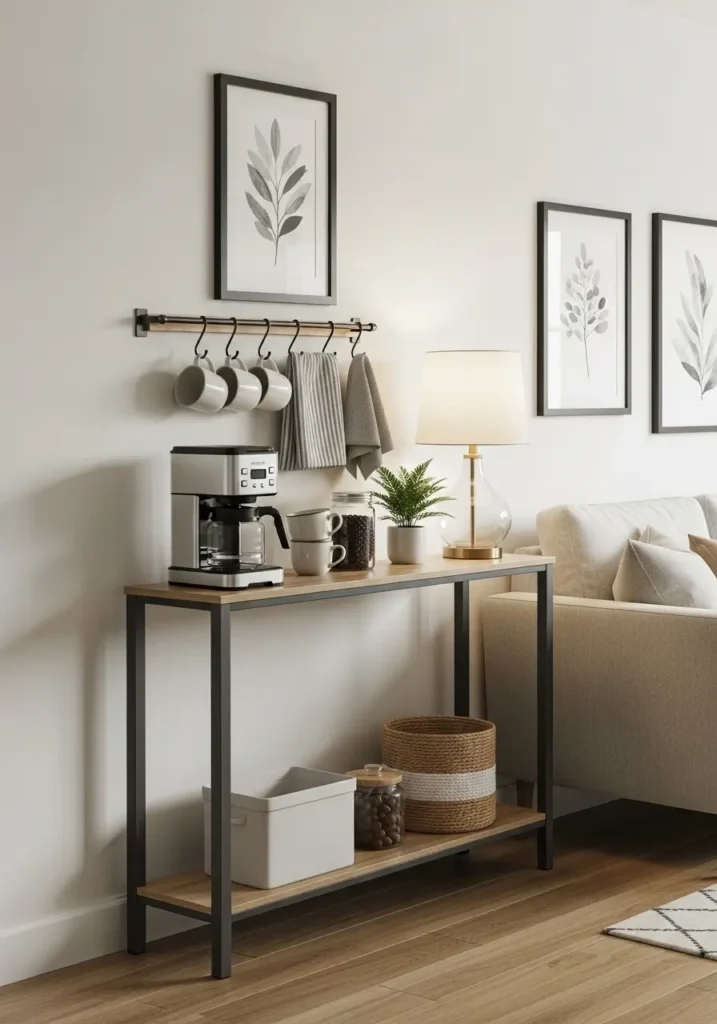
A slim console along a hallway or behind a sofa can host a simple Home Coffee Bar without blocking movement.
Pick a table that is shallower than your regular counters and check that nearby doors and drawers still open fully.
Place the brewer on one side, stack a few mugs and a canister of beans next to it, and keep a lamp, plant, or framed print on the other end for balance.
Mount hooks or a rail above the console for cups and towels if you lack storage below.
This arrangement works well in dining rooms and open living rooms where you want a soft zone between kitchen and seating.
6. Shelf and Cube Coffee Bar for Small Apartments
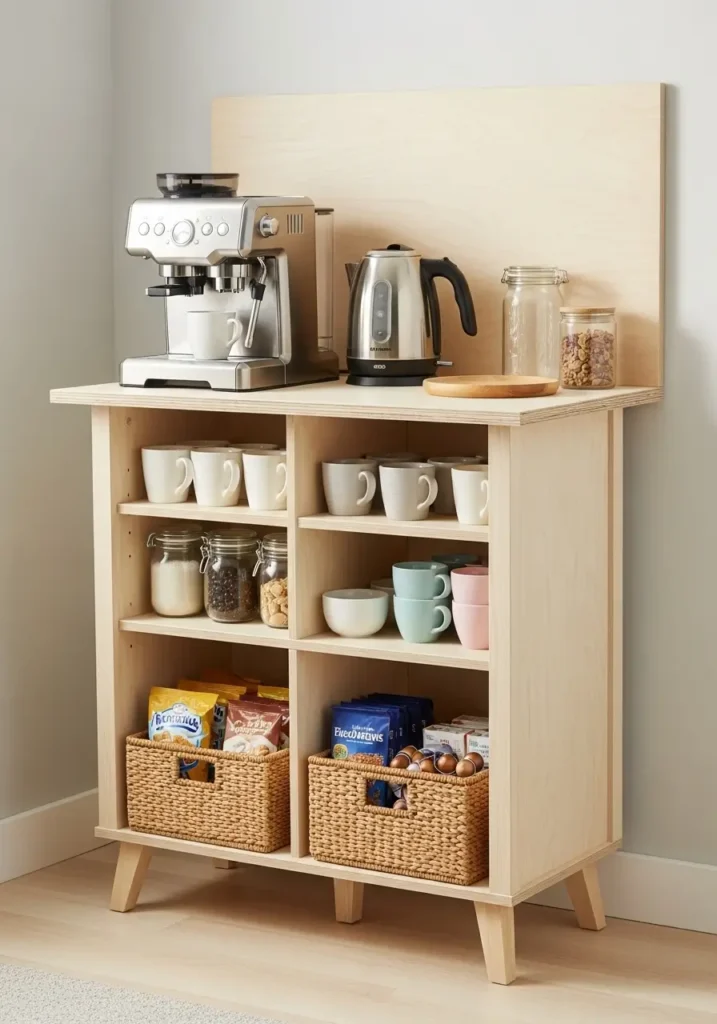
In compact city flats you can build a Home Coffee Bar with a simple cube shelf or bookcase topped by a sturdy board.
The top holds the machine and kettle, one row holds mugs and jars, and lower cubes host baskets for snacks, pods, and spare supplies.
You can add legs to a cube shelf for extra height and a lighter, more custom look.
When you match the unit color to your walls or floor, the Home Coffee Bar blends in and feels calm instead of heavy.
This choice suits renters and students who need storage, a work surface, and a coffee zone all in one piece.
7. Minimalist Home Coffee Bar for a Calm Look
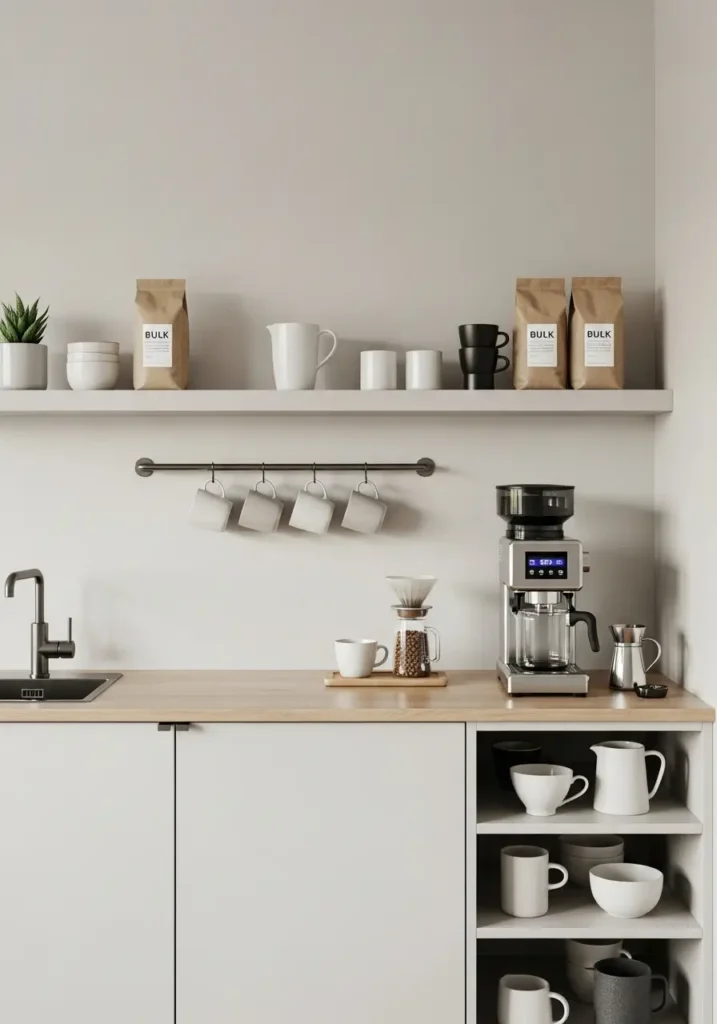
A minimalist Home Coffee Bar focuses on a single brewer, a few cups, and clear surfaces that support a quiet, simple feel.
Light cabinets, one clean shelf, and a short rail for mugs keep the design soft and open.
Store extra mugs and bulk beans out of sight and show only your favorite pieces on open shelves.
Neutral colors, simple lines, and plenty of empty space help the bar feel like a natural part of a modern or Scandinavian-style home.
This style works best if you value ease of cleaning and low visual noise more than a large display of cups and tools.
8. Rustic Farmhouse Coffee Corner
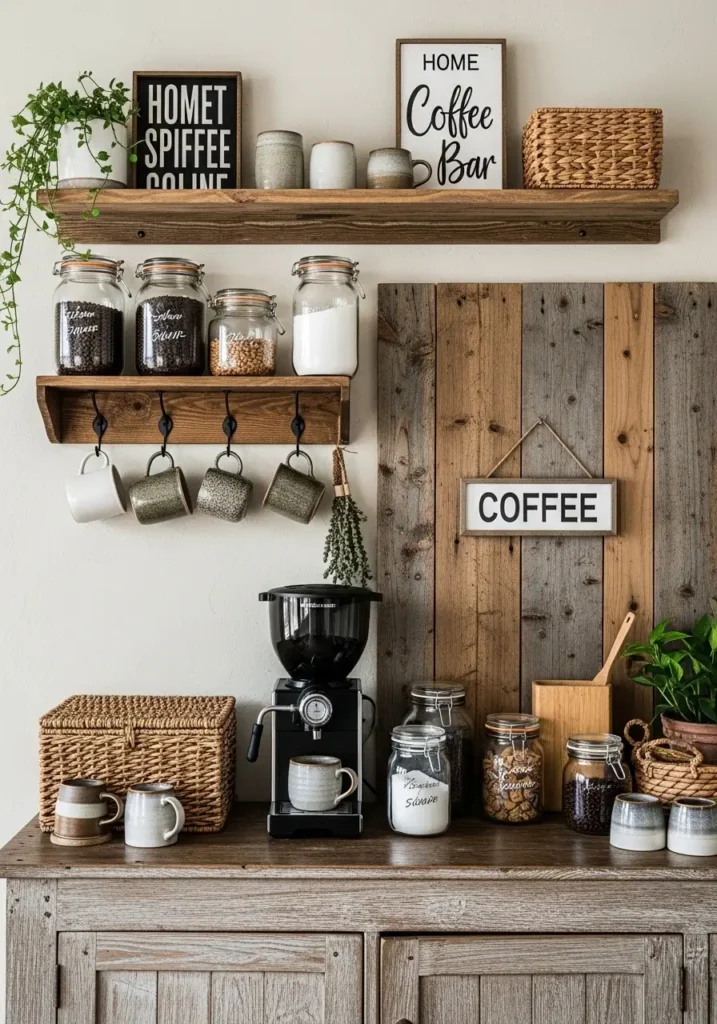
A rustic Home Coffee Bar leans into warm wood, textured walls, and simple jars and cups that feel relaxed and lived in.
You can mount wood shelves or a hook rack over a weathered cabinet or buffet table and fill clear jars with beans, sugar, and snacks.
A small board with vertical planks behind the station adds depth without complex carpentry.
Keep word art and signs to a minimum so the bar feels like a working space rather than a prop wall.
Mix stoneware mugs, woven baskets, and one or two plants to finish a warm rustic coffee corner.
9. Bold Color Statement Coffee Bar
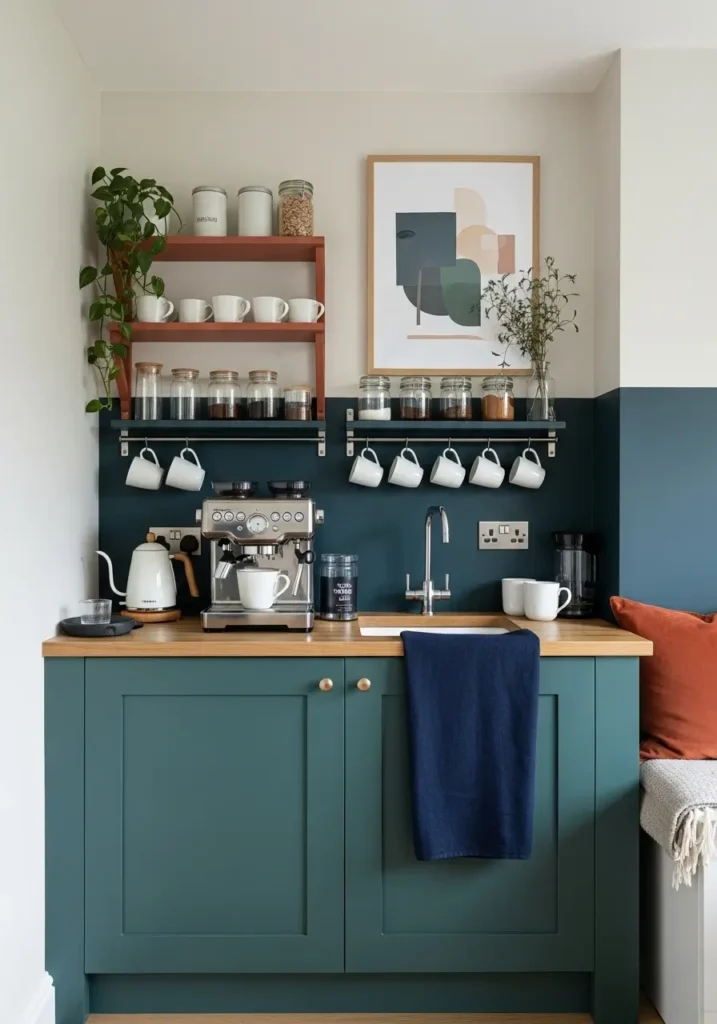
If your home uses many neutrals, a bold coffee wall can anchor the space and give your Home Coffee Bar a strong focal point.
Choose one deep shade, like forest green, rich navy, or warm terracotta, and paint the section behind the station or the full wall.
Hang open shelves or a rail on the wall and use white or clear cups and jars so the color takes the lead.
Repeat the accent shade in a kettle, a set of tins, or a cushion nearby to tie the bar into the rest of the room.
This choice suits people who enjoy strong design moves but still want a compact, easy-to-use coffee setup.
10. Multi-Beverage Coffee and Tea Center
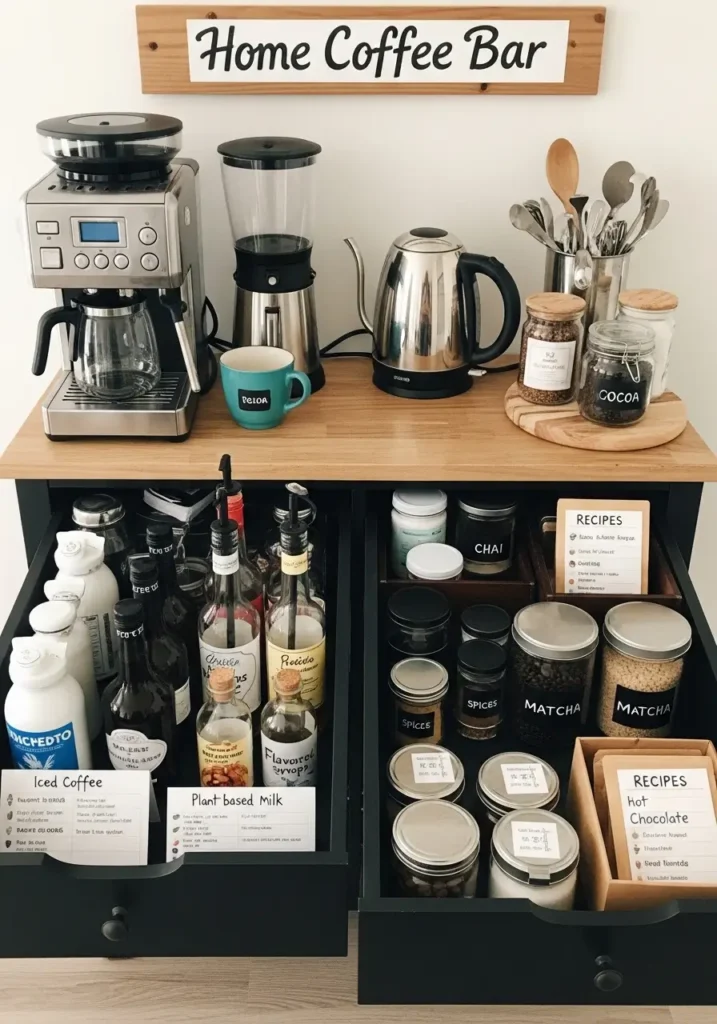
Many households mix coffee with tea, matcha, cocoa, and wellness drinks, so a multi-beverage Home Coffee Bar serves a wide range of tastes.
Use one side for coffee gear and the other for a kettle, teapots, and tins, then keep syrups, spices, and sweeteners in a shared drawer.
Include options like plant-based milks, flavored syrups, and decaf beans so everyone can find a drink that suits their needs.
Small labeled jars and clear canisters keep different items tidy and easy to spot at a glance.
Simple recipe cards for iced coffee, chai, and hot chocolate turn your bar into a fun tasting space for guests and family.
11. Dedicated Espresso Bar for Coffee Fans

If you love espresso drinks, a focused espresso bar may fit better than a broad Home Coffee Bar with many brew styles.
Place the machine and grinder side by side, with tampers, scales, and milk jugs within one easy reach.
Keep cups, shot glasses, and spare parts in drawers or cabinets so they stay dust free.
Mount a rail or pegboard above the station for tools such as distribution devices, brushes, and towels.
Make sure the counter is deep and strong enough for your machine and that you have safe access to power and water nearby.
12. Office or Study Coffee Nook for Remote Work
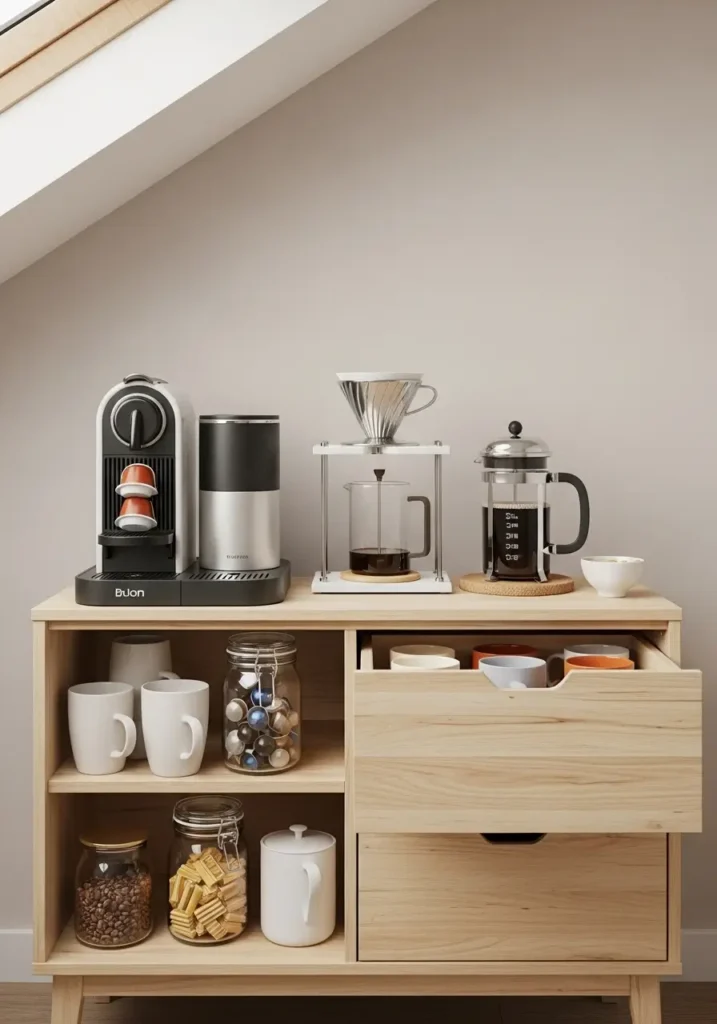
Remote workers often need a small Home Coffee Bar in a study or office to limit trips to the kitchen and protect focus.
A pod machine, small pour over stand, or French press on a sideboard or shelf can handle that role without much space.
Store a few mugs, a jar of beans or pods, and a canister of snacks in a drawer so the top stays clear between breaks.
Choose quiet gear and warm, soft colors so the station supports deep work instead of stealing attention.
This setup works well in spare bedrooms, loft offices, and shared living rooms in smaller homes.
13. Patio or Sunroom Home Coffee Retreat

If your climate helps, consider a seasonal Home Coffee Bar on a covered patio, deck, or sunroom for slow mornings with fresh air.
Use a weather-safe cart or console and keep beans and electrical gear inside when you do not use the station.
A set of stackable outdoor cups, a tray, and a storage bench for cushions and blankets turns the area into a true retreat.
Add plants and soft lighting to link your Home Coffee Bar with the garden or view.
This option shines for weekend brunch, late-night chats, and guests who love to sit outdoors.
14. Dessert and Home Coffee Bar Combo for Hosting
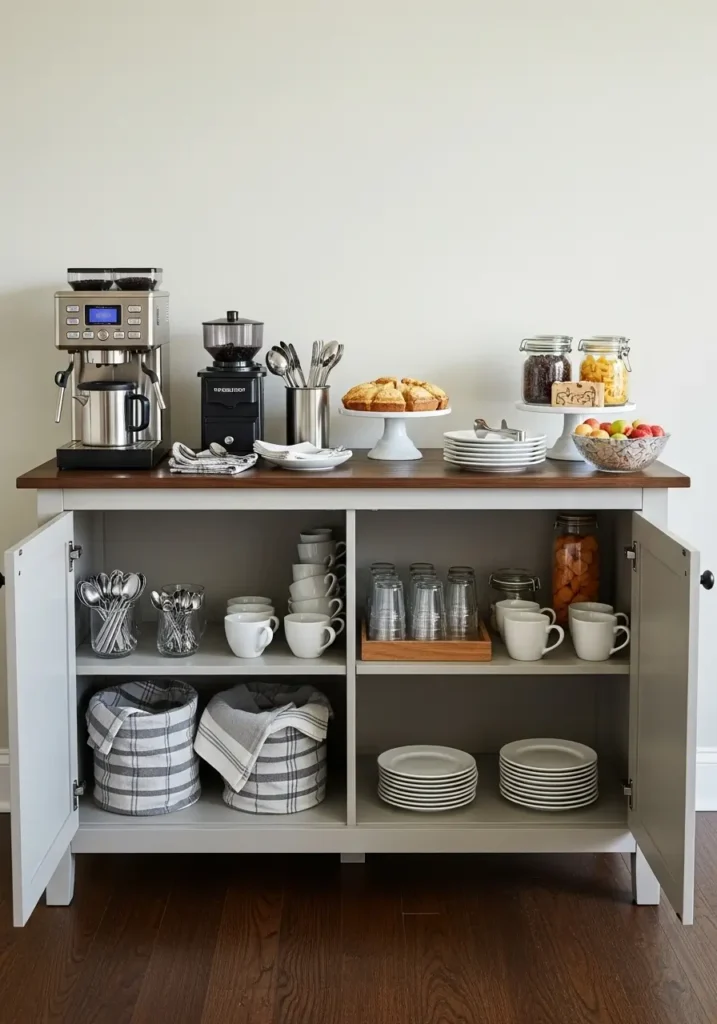
A dessert and coffee combo station helps you serve guests with ease and still works as a daily Home Coffee Bar when you do not host.
Use a buffet or cabinet and keep the brewer, grinder, cups, and spoons on one side with plates, cake stands, and jars for treats on the other.
Store table linens and extra plates inside so you can set up for gatherings in just a few minutes.
During the week the same unit acts as a simple coffee station with space for fruit or snacks beside your gear.
This layout fits dining rooms, open kitchens, and large hallways that sit near your main seating areas.
Related Post: DIY Floating Shelves for Small Home
Style Your Home Coffee Bar With Intention
Once you pick a layout, style choices turn your Home Coffee Bar from a cluster of items into a scene that invites you in.
The aim stays clear and simple: every item you see should serve a task, add beauty, or do both at once.
Choose a Short, Calm Color Palette
Start with the colors that already appear in your kitchen or living space and pick two or three that feel warm and steady.
White or cream dishes, light wood, and one accent shade like forest green or navy work well in many homes.
Repeat those colors in cups, jars, towels, and art so your Home Coffee Bar looks unified from top to bottom.
Balance Open and Closed Storage
Open shelves and hooks give quick access and show your favorite pieces, but too many open items can feel crowded.
Use cabinets, baskets, and drawers for bulk beans, extra mugs, pod boxes, and cleaning tools that you do not want in view.
Keep one or two shelves for display and daily use and hide the rest so your eye can rest.
Use Trays and Layers for Order
A tray under your main gear groups the station and makes cleaning simple, since you can lift the whole set for a quick wipe.
Place beans, sugar, and spoons in one tray and flavor add-ins in another to create clear zones on your Home Coffee Bar.
A board or mat under the machine protects the surface and frames the work area at the same time.
Add Plants, Art, and Light
One plant, one art piece, and one good light source often beat many small decor objects scattered across the space.
Choose a low-maintenance plant that fits your light level and place it away from steam and heat from kettles or machines.
A small framed print above the bar and a warm lamp or under-cabinet light create a soft café mood in the morning and at night.
Organize Storage and Workflow for Smooth Mornings
A Home Coffee Bar that looks nice but feels slow or awkward will frustrate you, so storage and workflow sit at the heart of good design.
Think of the bar as a small kitchen within the kitchen, with places for prep, brewing, flavor, and cleanup.
Create Clear Zones for Each Step
Map your brew steps in order and give each step a small physical zone: beans and grinder, water and machine, cups and add-ins.
Place beans where you stand first, then move toward the machine, then toward the mug and flavor area to keep your movement smooth.
Drawer organizers, bins, and individual jars keep tools in the right zone and easy to grab.
This simple path saves time each morning and limits spills and mess in every type of home.
Use Vertical Space for Mugs and Tools
Walls offer more storage than counters, and mug hooks, rails, and pegboards help you use that space well.
Hang your most-used cups at arm height, keep special cups higher, and leave some gaps so the wall does not feel packed.
A rail can hold spoons, towels, and filters, which frees drawer space for less-used items.
Vertical storage keeps narrow counters or carts from feeling crowded and makes cleaning easier.
Protect Surfaces and Tame Cords
Heavy machines and grinders can mark surfaces, and steam and drips can damage some wood and stone, so you need protection under your gear.
Use a sturdy mat, heat-safe board, or tray under the machine and place a cloth or small mat near the front for drips.
Keep the bar close to outlets to avoid long cords and use clips or small boxes to gather cords behind the station.
Clear cords reduce risk for kids and pets and keep your Home Coffee Bar tidy.
Plan Simple Cleaning and Maintenance
Coffee stains, grounds, and mineral build-up collect quickly, so maintenance habits work best when you build them into the layout.
Keep a bin or container for used grounds and filters within reach and store brushes, cloths, and descaler under the bar.
Set one weekly reset time to wipe surfaces, refill jars, and run a quick clean cycle on the machine.
These short steps protect your gear, keep flavors fresh, and make the Home Coffee Bar pleasant to use every day.
Choose Gear, Beans, and Drinks That Match Today’s Coffee Trends
Coffee culture evolves fast, with more focus on specialty beans, cold drinks, and ingredients that support health and flavor at the same time.
Your Home Coffee Bar can tap into these trends while staying simple and easy to run day after day.
Invest in Gear That Changes the Cup
The pieces that change taste the most are your grinder, your brewer, and your kettle or water source.
For drip and pour over fans, a burr grinder, a brewer with strong temperature control, and a gooseneck kettle make a clear difference.
Espresso drinkers see the largest gains from a stable machine, a matched grinder, a scale, and fresh beans.
Start with one core method and master it before you add more complex tools to your Home Coffee Bar.
Pick Beans That Fit Your Taste and Budget
Most people drink enough coffee across a year that bean choice and storage matter for both flavor and cost.
Choose beans with roast dates and flavor notes that match what you enjoy, such as nut, chocolate, or fruit, and store them in airtight, opaque containers.
Many home baristas keep one bag for daily cups and one smaller bag of a special roast for weekends or guests.
Buying whole beans and grinding at home usually brings better taste and can still support a reasonable budget.
Include Wellness-Focused and Seasonal Drinks
Younger drinkers in particular reach for cold coffee, flavored drinks, and options that support specific health goals.
Stock your Home Coffee Bar with cocoa, spices, plant-based milks, and low-caffeine beans so everyone can find a drink that fits their body and mood.
Rotate seasonal add-ins like pumpkin spice, peppermint, or citrus so the bar feels fresh without a full redesign.
Short handwritten recipe cards for iced coffee, flat whites, and flavored lattes help friends and kids explore new drinks in a relaxed way.
Make Sustainable Choices at Your Home Coffee Bar
As climate concerns grow, many coffee drinkers look for ways to cut waste and support farms and roasters that care for the land.
You can swap single-use pods for refillable ones, buy beans in bulk and store them in jars, and use cloth or metal filters where they suit your brew method.
Composting grounds, using reusable cups, and limiting plastic at the station all lower the footprint of your Home Coffee Bar.
For more data on broader consumption and sustainability you can explore reports from the National Coffee Association at NCAUSA.org or global trend overviews at Statista.
Use Your Home Coffee Bar for Hosting and Everyday Comfort
A Home Coffee Bar does more than serve your own morning drink; it also supports guests, family, and work days.
With a few extra touches you can shift the station from solo use to a full hosting hub in minutes.
Create a Guest-Friendly Setup
Guests should find what they need without a tour, so clear labels and visible supplies matter.
Place mugs, spoons, sweeteners, and cream where they sit in plain view and use a small sign or card to explain brew options.
Keep at least one caffeine-free choice and one non-dairy milk for visitors who have different needs.
A few to-go cups with lids on a shelf near the bar help friends who need a drink on the way out the door.
Use the Bar as a Daily Ritual Hub
Many people use the Home Coffee Bar as a daily anchor, a place to pause before work or reset in the afternoon.
You can keep a small stack of books, a journal, or a speaker near the station to pair coffee with reading or calm music.
A stool or nearby chair turns the area into a tiny café where you can sit for a few minutes instead of drinking on the move.
This short ritual can support better focus, lower stress, and help the day feel more grounded.
Refresh Decor With the Seasons
You do not need to rebuild your Home Coffee Bar each season; small swaps keep it fresh without much work.
In autumn you can add a pumpkin, a plaid cloth, or warm orange cups, then switch to greens and simple white tableware near the end of the year.
Spring can bring plants and pastel accents, while summer favors glass, citrus, and cold brew gear on the main surface.
Store off-season decor in one labeled box so you can switch themes in just a few minutes.
Key Takeaways:
- ✓A strong Home Coffee Bar starts with a clear plan for your routine, space, and budget rather than with decor alone.
- ✓Use one of the fourteen layout ideas as a base, then adapt shelves, carts, and cabinets to match your room and taste.
- ✓Focus spending on core gear such as grinders and brewers first, then layer in trays, jars, and art for style.
- ✓Organize the bar into simple zones, use vertical space, and plan easy cleaning steps to keep mornings smooth.
- ✓Draw on current coffee trends, wellness drinks, and sustainable choices so your Home Coffee Bar stays modern and mindful.
Frequently Asked Questions
How much space do I need for a Home Coffee Bar?
Many Home Coffee Bars fit into a space as small as two feet of counter or cart width, so you do not need a full wall.
The key lies in smart use of vertical space and in clear zones for brewing, cups, and supplies.
If you can place one machine, a mug row, and a canister of beans without overlap, you have enough room to begin.
What should I buy first when I set up a Home Coffee Bar?
Start with one reliable brewer that fits your taste, a good burr grinder for whole beans, and a small set of cups.
Next, add tools that match your method, such as a kettle and scale for pour over or a tamper and milk jug for espresso.
Storage pieces like trays, jars, and hooks come after you understand how you move around the station each day.
How can I keep my Home Coffee Bar from looking cluttered?
Limit the number of items on the main surface and keep backup gear, bulk beans, and rarely used mugs in closed storage.
Use matching jars for dry goods and keep labels clean and simple to cut visual noise on shelves.
A weekly reset, where you clear stray items and wipe surfaces, keeps the Home Coffee Bar tidy over time.
What trends should I pay attention to when I design my bar?
Recent trends highlight growth in specialty beans, cold drinks, and wellness-oriented options such as plant-based milks and functional add-ins.
At the same time, more people brew at home, so flexible layouts that handle new gear and drink styles make sense.
Design trends also favor floating shelves, compact beverage centers, and multi-use carts, which all work well for Home Coffee Bars.
How do I set a realistic budget for my Home Coffee Bar?
Look at your monthly spend on coffee at home and outside, then decide how much you want to shift into a one-time setup.
Many people gain strong value when they put most of their budget into a grinder and brewer and then build storage from pieces they already own.
You can add shelves, art, and decor over time so the bar grows with you without strain.
Final Thoughts
A Home Coffee Bar does not demand a large kitchen or a big budget; it grows from a clear plan, a good spot, and a few smart choices about gear and storage.
When you follow your own routine, pick one of the fourteen layout ideas as a base, and shape the space with simple colors and neat zones, you create a corner that works for busy mornings and calm weekends.
Start small, refine as you go, and let your Home Coffee Bar reflect the way you want to feel each time you pour a cup.
